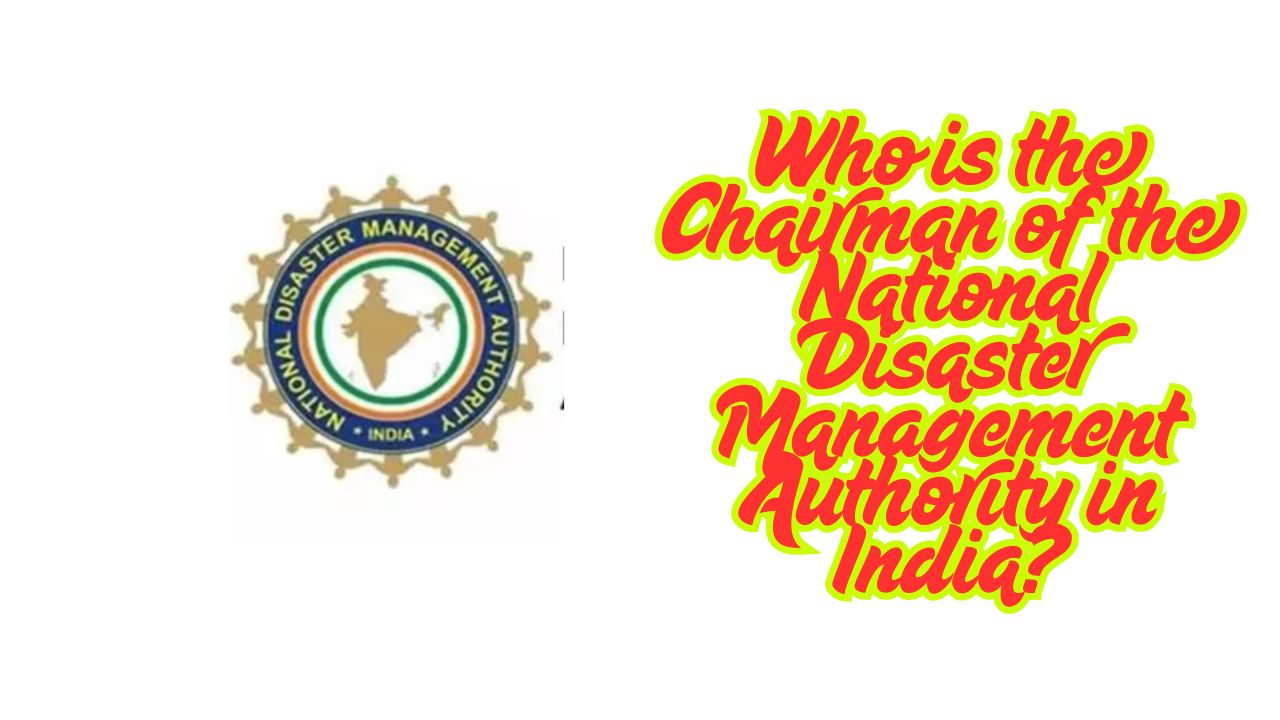The Chairman of the National Disaster Management Authority (NDMA) in India is the Prime Minister of India. As of 2025, the current Chairman of NDMA is Shri Narendra Modi, who continues to serve as the Prime Minister of India. The appointment of the Prime Minister as the head of this crucial body highlights the significance the Government of India places on disaster management, preparedness, and response mechanisms.
NDMA plays a vital role in creating policies, coordinating disaster response efforts, and ensuring that disaster risk reduction strategies are implemented across the country.
What is the National Disaster Management Authority (NDMA)?
The National Disaster Management Authority (NDMA) is the apex body in India responsible for formulating policies, laying down guidelines, and coordinating with State and Central agencies for disaster management and risk reduction. NDMA was formally established under the Disaster Management Act, 2005, which provides the legal framework for disaster preparedness, prevention, and response in India.
The vision of the NDMA is:
“To build a safer and disaster-resilient India by a holistic, pro-active, technology-driven and sustainable development strategy that involves all stakeholders and fosters a culture of prevention, preparedness and mitigation.”
Composition of the NDMA
While the Prime Minister of India is the ex-officio Chairman of NDMA, the Authority also includes other key figures to support its functioning:
-
Vice Chairman (with the rank of Cabinet Minister)
-
Up to nine members, each with expertise in disaster management, planning, administration, or relevant fields
Each member is responsible for specific areas such as mitigation, preparedness, response, training, and capacity building.
As of 2025, NDMA’s Vice Chairman and members include experienced individuals from administrative, defense, scientific, and technical backgrounds who contribute to India’s disaster resilience.
Why is the Prime Minister the Chairman of NDMA?
The decision to make the Prime Minister the Chairman of NDMA was strategic and symbolic. It reflects the importance of disaster management in national governance. Some key reasons include:
-
Centralized Decision-Making: Disasters require rapid response and strong coordination across ministries. The Prime Minister’s leadership ensures high-level decisions are taken promptly.
-
Cross-Ministerial Influence: Being the head of the central government, the Prime Minister can direct multiple departments to work cohesively during emergencies.
-
Public Confidence: The involvement of the nation’s highest elected leader increases trust and confidence in disaster response mechanisms.
Functions and Responsibilities of the NDMA
The NDMA has a wide range of responsibilities aimed at minimizing disaster risks and ensuring a coordinated response in the event of calamities. These include:
1. Policy Making
NDMA lays down national policies and plans for disaster management. These guidelines are adopted and adapted by state disaster management authorities.
2. Mitigation Planning
NDMA creates plans and frameworks to reduce the impact of future disasters. This includes building codes, land-use regulations, and promoting sustainable development practices.
3. Capacity Building
It conducts training programs, disaster simulations, and awareness campaigns to prepare citizens and institutions.
4. Technology Adoption
NDMA promotes the use of early warning systems, geospatial technologies, and real-time monitoring for floods, cyclones, earthquakes, etc.
5. Coordination During Emergencies
NDMA coordinates with agencies like NDRF (National Disaster Response Force), the Indian Armed Forces, IMD (India Meteorological Department), and others during emergencies.
Major Initiatives by NDMA under Prime Minister Modi’s Chairmanship
Since Narendra Modi became the Chairman of NDMA in 2014 (as Prime Minister), several critical initiatives have been undertaken to modernize and improve India’s disaster response systems.
1. Expansion of NDRF
The National Disaster Response Force (NDRF), NDMA’s dedicated response wing, has been expanded and better equipped with modern tools and training.
2. COVID-19 Response
NDMA played a central role in India’s response to the COVID-19 pandemic, coordinating medical logistics, quarantine guidelines, and awareness campaigns.
3. Heatwave and Cyclone Preparedness
Special advisories and action plans were developed to mitigate the impact of heatwaves and cyclones in vulnerable regions.
4. Early Warning Dissemination System
NDMA promoted the development of mobile-based alert systems and partnerships with agencies like ISRO and IMD to provide faster early warnings.
5. School Safety Program
Under NDMA’s guidance, many states have adopted school safety programs to teach students and teachers how to react during earthquakes, fires, or floods.
State Disaster Management Authorities (SDMAs)
Just like NDMA functions at the national level, every Indian state has its State Disaster Management Authority (SDMA). The Chief Minister of the respective state acts as the Chairman of the SDMA. This parallel structure ensures that disaster preparedness and response are decentralized and efficient.
Key Disasters Where NDMA Played a Crucial Role
-
Uttarakhand Flash Floods (2013)
-
Cyclone Fani (2019)
-
COVID-19 Pandemic (2020-2022)
-
Assam Floods (multiple years)
-
Glacial Outburst in Uttarakhand (2021)
In all these events, NDMA’s coordination and quick mobilization of the NDRF, along with close collaboration with state governments, helped reduce the potential loss of life and property.
International Collaborations
NDMA has actively collaborated with several international agencies such as:
-
United Nations Office for Disaster Risk Reduction (UNDRR)
-
Japan International Cooperation Agency (JICA)
-
USAID
-
SAARC Disaster Management Centre
These partnerships enhance India’s preparedness by incorporating best global practices.
Future Goals of NDMA
Under the leadership of the Prime Minister, NDMA continues to strive towards the following objectives:
-
Building climate-resilient infrastructure
-
Strengthening disaster risk governance
-
Increasing community participation in disaster management
-
Integrating disaster education into school and college curricula
-
Promoting research and innovation in disaster risk reduction
Conclusion
To sum up, the Chairman of the National Disaster Management Authority (NDMA) in India is the Prime Minister, and as of 2025, it is Shri Narendra Modi. His leadership ensures that disaster management is treated with the urgency and importance it deserves at the highest level of governance.
NDMA remains a critical pillar in India’s emergency management framework, focusing not just on response but on prevention, mitigation, preparedness, and recovery. Through active policy-making, coordination with states, public awareness campaigns, and technological innovations, the NDMA continues to steer India toward becoming a disaster-resilient nation.

